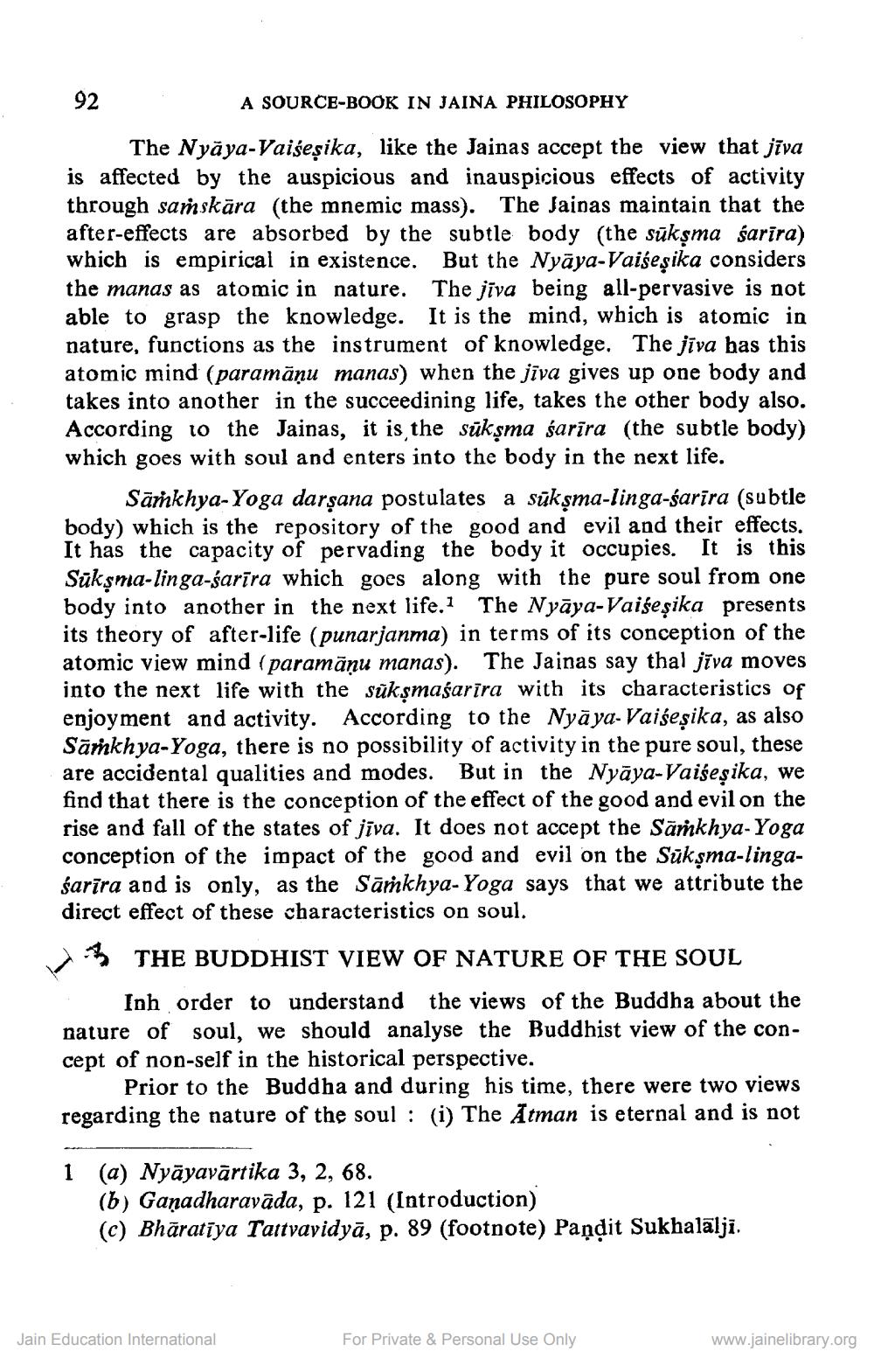________________
92
A SOURCE-BOOK IN JAINA PHILOSOPHY
The Nyaya-Vaiseṣika, like the Jainas accept the view that jīva is affected by the auspicious and inauspicious effects of activity through samskāra (the mnemic mass). The Jainas maintain that the after-effects are absorbed by the subtle body (the sukṣma sarira) which is empirical in existence. But the Nyaya-Vaiśeşika considers the manas as atomic in nature. The jiva being all-pervasive is not able to grasp the knowledge. It is the mind, which is atomic in nature, functions as the instrument of knowledge. The jīva has this atomic mind (paramāņu manas) when the jīva gives up one body and takes into another in the succeedining life, takes the other body also. According to the Jainas, it is, the sūkṣma śarīra (the subtle body) which goes with soul and enters into the body in the next life.
Samkhya-Yoga darșana postulates a sūkṣma-linga-śarīra (subtle body) which is the repository of the good and evil and their effects. It has the capacity of pervading the body it occupies. It is this Sūkṣma-linga-sarīra which goes along with the pure soul from one body into another in the next life.1 The Nyaya-Vaiseṣika presents its theory of after-life (punarjanma) in terms of its conception of the atomic view mind (paramāņu manas). The Jainas say thal jīva moves into the next life with the sukṣmasarīra with its characteristics of enjoyment and activity. According to the Nyaya-Vaiseṣika, as also Samkhya-Yoga, there is no possibility of activity in the pure soul, these are accidental qualities and modes. But in the Nyaya-Vaiseṣika, we find that there is the conception of the effect of the good and evil on the rise and fall of the states of jiva. It does not accept the Samkhya-Yoga conception of the impact of the good and evil on the Sukṣma-lingaśarīra and is only, as the Samkhya-Yoga says that we attribute the direct effect of these characteristics on soul.
THE BUDDHIST VIEW OF NATURE OF THE SOUL
Inh order to understand the views of the Buddha about the nature of soul, we should analyse the Buddhist view of the concept of non-self in the historical perspective.
Prior to the Buddha and during his time, there were two views regarding the nature of the soul: (i) The Atman is eternal and is not
1 (a) Nyāyavārtika 3, 2, 68.
(b) Gaṇadharavada, p. 121 (Introduction)
(c) Bharatiya Tattvavidya, p. 89 (footnote) Pandit Sukhalalji.
Jain Education International
For Private & Personal Use Only
www.jainelibrary.org




